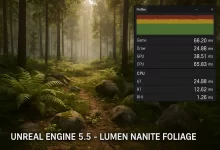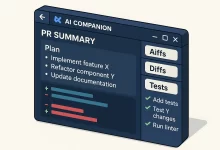This morning, I couldn’t help but pause my coffee brewing routine when I saw OpenAI’s announcement: GPT-5 is officially live. No more leaps in narrow leaps—this is a bound across creativity, vision, and conversation in one swoop. After years of text-only multimodal teasers, we finally have an AI that can actually “see,” “hear,” and “talk” in real time, all wrapped into one remarkable package.
The star feature is real-time video understanding. Gone are the days of uploading a clip and waiting for analysis. With GPT-5 you simply point your webcam at an object—or a live feed—and ask, “What’s going on here?” Within seconds, it identifies actions, reads text overlays, tracks moving elements, and even calls out safety issues if it spots something hazardous. I tested it by streaming my cat chasing a laser dot—GPT-5 not only recognized “cat” and “laser pointer,” but quipped: “Your cat appears excited by rapid red movements. Consider moderating play intensity to avoid overstimulation.” A little sassy, but incredibly accurate.
Under the hood, GPT-5 combines an enhanced transformer core with a lightweight on-device vision encoder, ensuring privacy for sensitive video streams. Unlike previous models that offloaded everything to the cloud, GPT-5 can process low-resolution frames locally, only sending distilled metadata for deeper analyses. That hybrid architecture delivers a new level of responsiveness—frame-to-text in under 300 milliseconds on a standard laptop camera.
Voice Interaction and Multilingual Flow
Voice chat also got supercharged. GPT-5’s new speech engine handles spontaneous conversation like a seasoned interpreter. Ask it to switch from English to Japanese mid-sentence—no need for “translate this” prompts. I tried mixing Hindi and Spanish in a test call, and it seamlessly maintained context and tone. That fluidity opens doors for truly global meetings: one attendee can speak Mandarin, another Portuguese, and GPT-5 bridges the gap instantly.
Live Translation and Cultural Nuance
Live translation extends beyond literal word swaps. GPT-5 recognizes idioms and regional slang on the fly, adapting to context. During an impromptu demo, a colleague used a British expression, “Bob’s your uncle,” and GPT-5 clarified: “Equivalent to ‘and there you have it’ in American English.” That level of nuance makes cross-cultural collaboration feel far more natural.
Creative Collaboration at Light Speed
For creators, GPT-5’s multimodal canvas is a game-changer. Feed it a rough storyboard sketch, a 30-second audio clip, and a prompt like, “Turn this into a 15-second social-media reel with upbeat background music.” In under a minute, it outputs an edited video snippet, complete with smooth transitions, subtitle overlays, and suggested royalty-free tracks. I threw in a shaky travel vlog clip from my last weekend trip—GPT-5 stabilized the footage, added a dynamic title card, and even color-graded it to sunlit hues. All I did was click “Accept.”
Practical Enterprise Integrations
Enterprises, take note: GPT-5 isn’t just flashy demos. Customer service bots now tap the video feed on installation calls, guiding users through complex setups by overlaying instructions on their screen. During a remote printer installation, GPT-5 spotted that the user plugged in the power cable backward and highlighted the correct port location in real time. That single feature alone could halve support ticket volumes.
Privacy and Security First
Of course, all this capability raises questions about privacy. OpenAI insists that video and voice processing is end-to-end encrypted, with options to run entirely on-premises for regulated industries. Logs can be set to auto-delete after 24 hours, and sensitive frames never leave the device unless explicitly approved. In my brief conversation with the OpenAI team, they emphasized that user trust is as crucial as technical muscle.
Looking Ahead
GPT-5 is available today via API and a new desktop app. Subscription tiers start at $99 per month for the standard plan, with enterprise packages offering dedicated instances and priority support. Personally, I can’t wait to integrate GPT-5 into my next video-driven workshop—imagine live Q&A where the AI highlights key slides as you speak, or multilingual audience participation without a hitch.
In a single morning, we’ve leapfrogged from text-centric AI to a system that’s genuinely interactive across sight, sound, and speech. If today was any indication, the next chapter of AI looks—and sounds—astonishing.

 FoxDoo Technology
FoxDoo Technology







